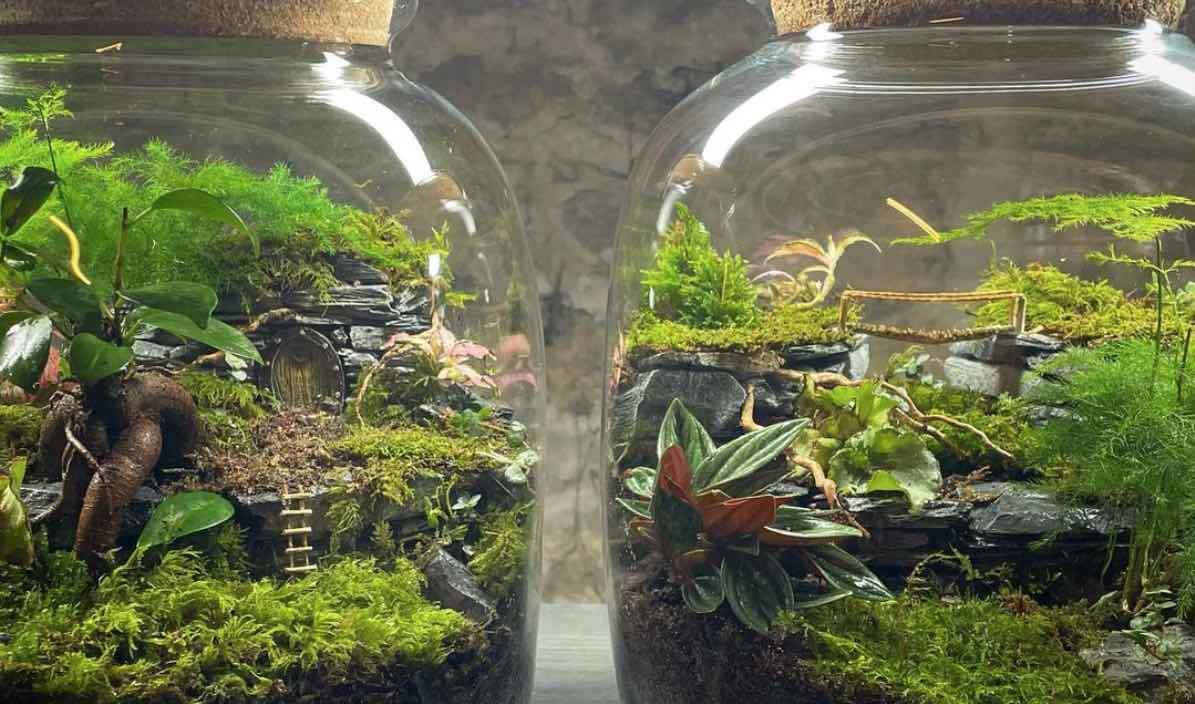The Way to a Man's-And Woman's-Heart Really IS Through Their Stomach
A new poll revealed that most believe the age-old adage does ring true: The way to a man's heart is through his stomach-a woman's too.

Gardeners "tend" to be happier than most, because among other reasons like getting more vitamin D or being in nature, they always have something to look forward to.
But one of the most fascinating gardening trends is undoubtedly the popular advent of building and maintaining terrariums-little slices of tropical climate encased in glass jars, bottles, or fish tanks which if prepared correctly can last for decades.
NASA describes a terrarium as a "forest enclosed in its own little world," but there's no particular rulebook for how big a terrarium should be or what should be kept inside. The Subreddit "Let's Talk Terrariums" bears witness to that.
This Redditor managed to compress that forest enclosed within its own little world into the pendant on a necklace, while this one 3D printed a special enclosure with beautiful lighting.
Far from being simple eye-candy, tending a terrarium can actually improve one's mood-even the simple act of having a plant or two around will decrease anxiety, and can help refresh one's mind after a period of focusing on work.
This was particularly poignant, one terrarium business owner told the BBC, during lockdowns.
"I saw a real influx in people wanting to get into horticulture and grow their green thumb," says Emma Terrell, from Ottawa, Canada. The Great White North also experienced a boom in cultivating mushrooms at home.
Terrell runs Urban Botanist where she sells DIY supplies for making terrariums of all kinds.
"People saw it as a way to relax, unwind, get creative, and engage with that innate need within us to engage with nature."
There's also a natural geometry, or so it's thought, of plants that make them appealing to look at. All humans tend to prefer things in symmetry, or in consistent patterns like a spiral, and so plant leaves or fern stalks may be nice to look at for reasons involving fractals and mathematics rather than just ‘simple' beauty.
To get started, you can buy terrarium kits on Amazon. Making your own terrarium begins with first deciding whether one wants an open-air terrarium or a closed-off version.
For a closed-off terrarium, pick a soil substrate that wont cultivate mold. James Wong, a botanist and author told the BBC to use kurodama soil, which is typical of bonsai trees, a species that can also be at home in a terrarium. This Redditor used a Fukien tea/carmona bonsai.
Next, pick plants that would be at home on the forest floor in the tropics. Simple species like moss and ferns work well.
A post shared by Babylon Terrariums (@babylonterrariums)
"I've researched all the different species [of moss], there's only one that's easily accessible and very reliable. It's called Leucobryum glaucum, sold by florists as 'bun moss," Wong said.
There's a limit in a closed ecosystem to how many plants can be sustained, so fill in gaps using decorative objects like stones, driftwood, or maybe a garden gnome.
NASA for kids suggests using a layer of activated charcoal above a strata of rocks at the bottom of the terrarium, under the soil, to help filter water and prevent the growth of mold. They say to put the terrarium in indirect light, but Wong says you can use a growing light to help if the room is too dark.
TAKE This Good Green News Over to Those News Feeds…
Be the first to comment